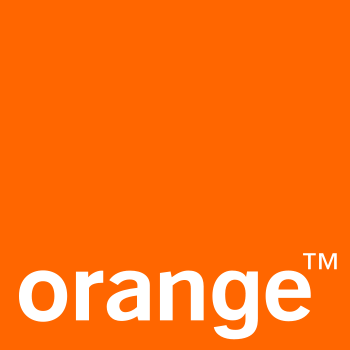
Image source: Orange.
Orange SA (ORAN +1.18%) reported fourth-quarter and full-year results in the early morning hours on Tuesday. The French company, formerly known as France Telecom, delivered steady sales and EBITDA earnings, and Orange shares rose more than 2.5% in Tuesday's market action.
Orange's results: The raw numbers
|
Q4 2015 Actuals |
Q4 2014 Actuals |
Growth (YOY) | |
|---|---|---|---|
|
Revenue |
10.40 billion euros |
10.38 billion euros |
0.2% |
|
Reported EBITDA profits |
3.06 billion euros |
3.02 billion euros |
1.3% |
Data source: Orange.
What happened with Orange?
"Steady as she goes," would be a fair assessment of this quarter. That being said, the results actually came in slightly above Orange's own expectations.
- At the start of fiscal year 2015, management took a look at a handful of pending buyouts and the disposal of operations in Armenia, and set the full-year EBITDA target at 12.0 billion euros. But these integration programs worked out better than expected, and full-year EBITDA came in at 12.4 billion euros.
- Sales were particularly strong in Europe, with some extra muscle in France itself. Expansions in Africa and the Middle East were less impressive this time, but management still described these efforts as "strong."
- Orange more than doubled its number of 4G mobile data customers in Europe, and high-speed fiber-optic services nearly tripled.
- The company now has 11 million subscribers in Africa and the Middle East, reflecting 4.1% growth from the end of 2014. However, Orange has not even started to roll out 4G networks in these markets, leaving that potential revenue driver for later -- along with the heavy network investments needed to get that product off the ground.
Looking ahead, Orange's management offered a limited set of guidance targets for 2016.
- Adjusted EBITDA profits should simply come in higher than the 2015 tally, which was 12.4 billion euros.
- In order to solidify Orange's financial foundation and offer flexible investment options, net debt should hover near 2 times trailing EBITDA profits over the next couple of years. This ratio currently stands at 2.01, down from 2.09 at the end of 2014.
What management had to say
The future is always under construction, especially for capital-intensive businesses like a multinational telecom. That's certainly the case for Orange, and CEO Stephane Richard is planning some major infrastructure investments in 2016, saying:
CapEx was substantial [in 2015]. It really is the key to our strategy. Orange's differentiator has to be the quality of the customer experience. This means investing more ...I announced that we would invest 15 billion Euro in networks by 2018. We are on target with those plans.
The increase in CapEx is crucial to understanding where our sales performance is coming from. It is the quality of our networks -- pretty much across the board -- that differentiates us from our competitors.
In 2015, Orange pumped 16% of its incoming revenue into capital projects. This ratio is an all-time high for the company, and will remain at this level "for the next two years at least," according to Richard. "This is how we plan to secure the market-leading position we are in today."
Looking ahead
Orange leadership has been talking to fellow French telecom giant Bouygues Group since the start of 2016, looking to combine the two French networks somehow. The discussions are still ongoing, and it could be "weeks before any decision is taken," according to the earnings report.
If an agreement is reached, it would certainly be a game-changer. The Wall Street Journal estimates that Bouygues could fetch some 10 billion euros for its telecom network operations, sparking consolidation across the French telecom market. To close such a deal, Orange would also probably have to divest some French operations, or face the wrath of antitrust regulators.
Keep an eye out for more news on this potential blockbuster deal.
